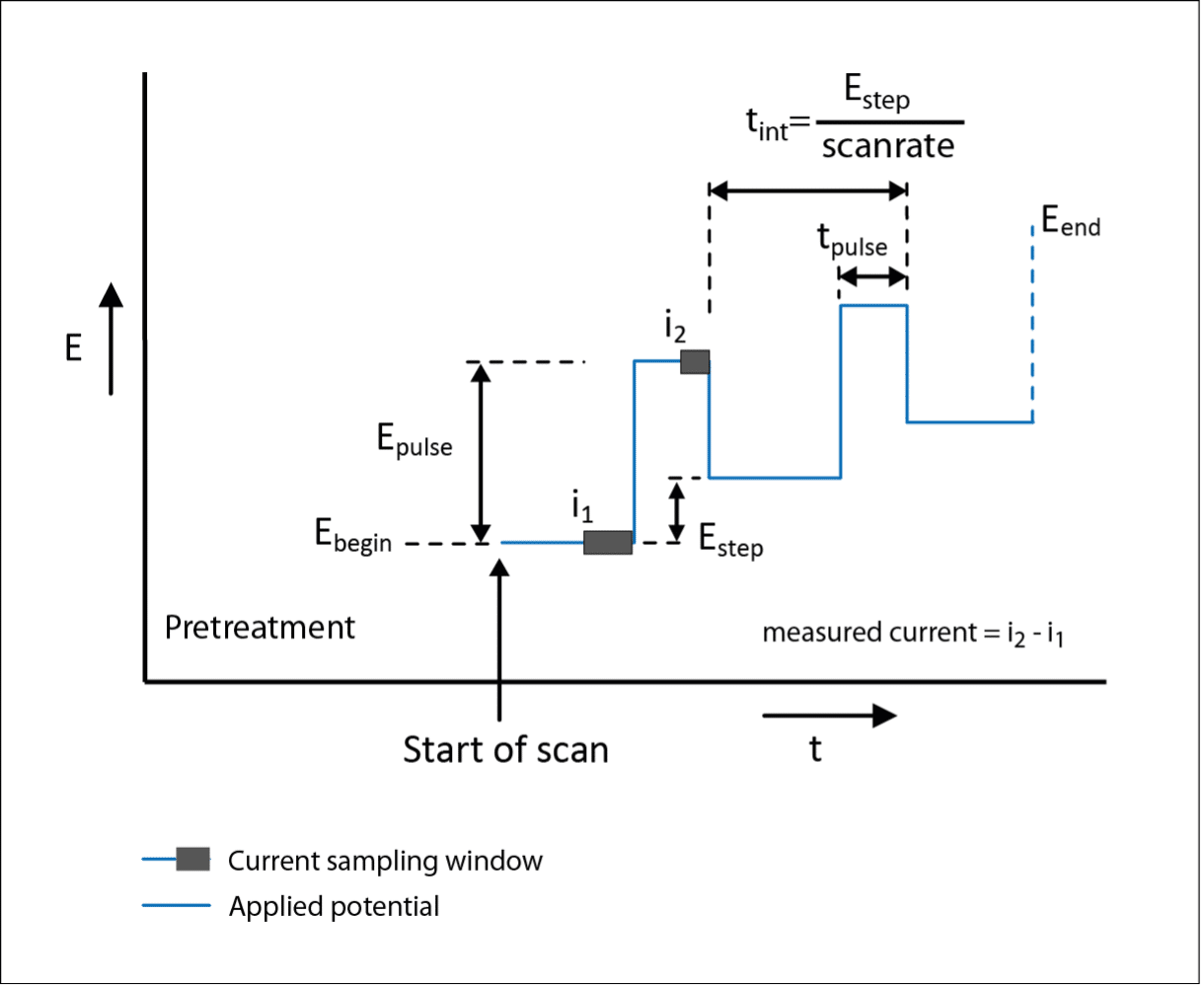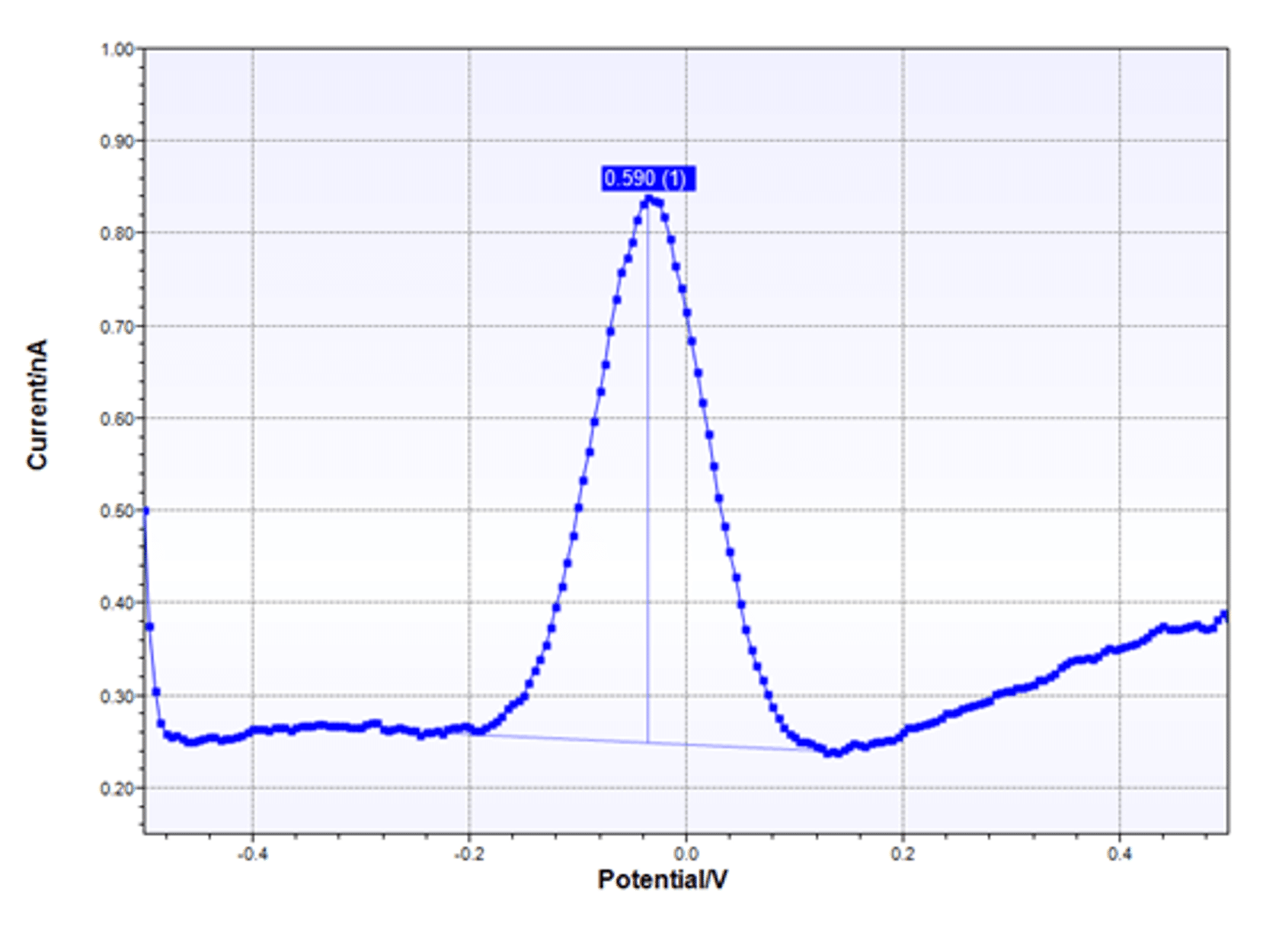Differential Pulse Voltammetry (DPV)
Differential Pulse Voltammetry (DPV) is an electrochemical technique. In Differential Pulse Voltammetry a potential scan is made using pulses with a constant amplitude of E pulse superimposed on the dc-potential.
Typical voltage amplitude
The voltage amplitude is mostly in the range of 5 – 50 mV.

Interval time
The interval time between the pulses is equal to E step / scan rate.
Obtained current
The current is sampled twice in each step: one time just before applying the pulse and one time at the end of the pulse. The difference between these two current samples is plotted versus the potential.
The obtained current is proportional to the derivative of the curve obtained using linear sweep or normal pulse voltammetry. A DPV thus has a peak-shaped curve. The peak height is (normally) proportional to the concentration in the solution. Be aware that the peak is not the redox potential! E peak = E½ – E pulse / 2.

